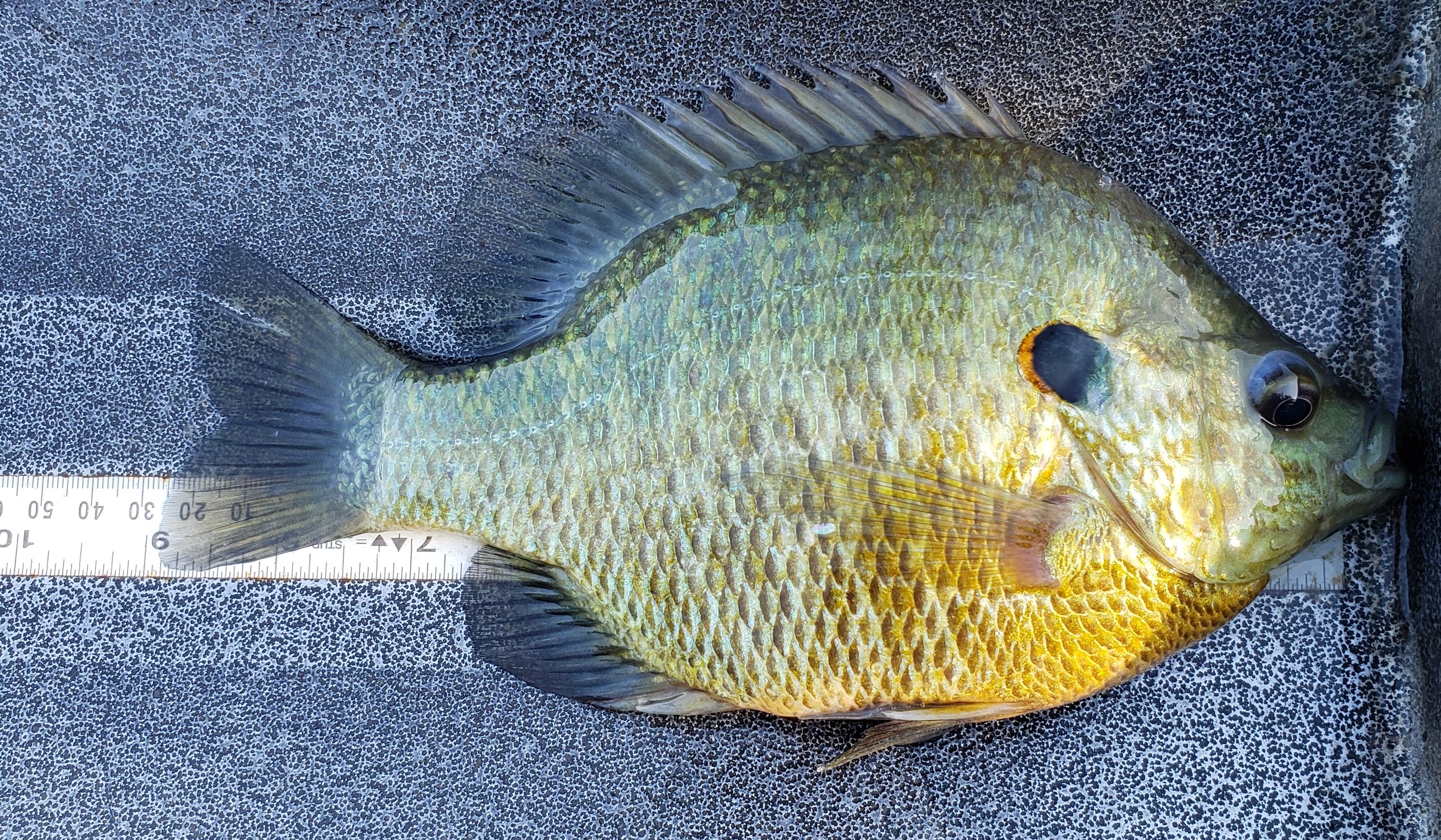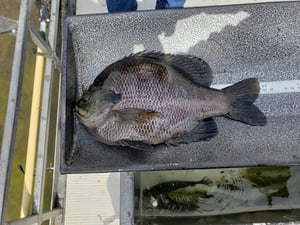What is a Redear Sunfish Anyway?
 Let’s start off by explaining what a Redear is. A Redear Sunfish (Lepomis microlophus) is an easily distinguished member of the sunfish family, and in some areas of the U.S. is known as a "shellcracker." They bear a close resemblance to a Native Bluegill but have a bright red/ orange patch towards the back of their gill plate (see above). In the larger sizes, their faces appear to more pointed than compared to the blunt front end of a Bluegill. They don’t compete with Bluegill for resources because their primary diet is aquatic invertebrates, including snails. They grow to roughly the same size as Native Bluegill but are not as prolific. Meaning they do not produce the quantity of offspring that Native or Coppernose Bluegill are capable of. This is why they cannot provide the sole forage resource for any fishery. For more about sunfish, see our post "Which Sunfish Live in Your Pond."
Let’s start off by explaining what a Redear is. A Redear Sunfish (Lepomis microlophus) is an easily distinguished member of the sunfish family, and in some areas of the U.S. is known as a "shellcracker." They bear a close resemblance to a Native Bluegill but have a bright red/ orange patch towards the back of their gill plate (see above). In the larger sizes, their faces appear to more pointed than compared to the blunt front end of a Bluegill. They don’t compete with Bluegill for resources because their primary diet is aquatic invertebrates, including snails. They grow to roughly the same size as Native Bluegill but are not as prolific. Meaning they do not produce the quantity of offspring that Native or Coppernose Bluegill are capable of. This is why they cannot provide the sole forage resource for any fishery. For more about sunfish, see our post "Which Sunfish Live in Your Pond."
The Problem with Aquatic Snails
 Getting back on subject, why is it so important to stock a species that primarily consumes aquatic snails in your fishery? Aquatic snails are what is called an intermediate host for a variety of parasites that in the intermediate stages of their lifecycle reside in your Largemouth Bass, Bluegill, Catfish and other species. One of the most common parasites is the Yellow Grub. Its life cycle begins by hatching out of an egg in your pond, then begins to swim until it finds a snail to inhabit. Once in the snail this single grub multiplies into numerous individuals that leave the snail and swim about until they come into contact with a fish. After this contact they burrow into the flesh of the fish and excrete a protective barrier that forms the cysts. After this stage the grubs lay dormant so to speak in the fish’s flesh until it is consumed by a piscivorous bird. The enzymes in the stomach of the bird break down the cysts and the newly freed grubs travel back up the esophagus of the bird to finish their lifecycle. Finally in the esophagus the grubs become worms and reproduce. The eggs are then distributed into the water as the bird continues to feed and the cycle begins again. There are many more types of parasites that have the same lifecycle, this is just the most common.
Getting back on subject, why is it so important to stock a species that primarily consumes aquatic snails in your fishery? Aquatic snails are what is called an intermediate host for a variety of parasites that in the intermediate stages of their lifecycle reside in your Largemouth Bass, Bluegill, Catfish and other species. One of the most common parasites is the Yellow Grub. Its life cycle begins by hatching out of an egg in your pond, then begins to swim until it finds a snail to inhabit. Once in the snail this single grub multiplies into numerous individuals that leave the snail and swim about until they come into contact with a fish. After this contact they burrow into the flesh of the fish and excrete a protective barrier that forms the cysts. After this stage the grubs lay dormant so to speak in the fish’s flesh until it is consumed by a piscivorous bird. The enzymes in the stomach of the bird break down the cysts and the newly freed grubs travel back up the esophagus of the bird to finish their lifecycle. Finally in the esophagus the grubs become worms and reproduce. The eggs are then distributed into the water as the bird continues to feed and the cycle begins again. There are many more types of parasites that have the same lifecycle, this is just the most common.
If your goal is to raise trophy-class Largemouth Bass, you need to include Redear Sunfish in your supplemental stocking plan.



 The general thinking is this: If I stock my pond with Bluegill then there is no reason to stock it with any other sunfish species. Everything eats Bluegill so aren't all those other species just extras that pond management companies are trying to sell me? This couldn't be further from the truth. Yes, everything eats Bluegill. And, yes, they are going to be your primary forage producers for your pond. But Bluegill are not adapted to consume aquatic snails. Why is the consumption of aquatic snails important, you ask? Primarily because the reduction of aquatic snails can improve the growth rates of your desired species, including Largemouth Bass.
The general thinking is this: If I stock my pond with Bluegill then there is no reason to stock it with any other sunfish species. Everything eats Bluegill so aren't all those other species just extras that pond management companies are trying to sell me? This couldn't be further from the truth. Yes, everything eats Bluegill. And, yes, they are going to be your primary forage producers for your pond. But Bluegill are not adapted to consume aquatic snails. Why is the consumption of aquatic snails important, you ask? Primarily because the reduction of aquatic snails can improve the growth rates of your desired species, including Largemouth Bass. 
